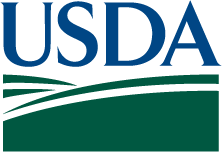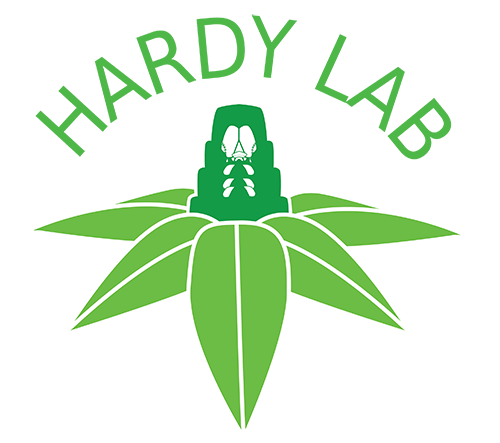Valid Names Results
Neolecanium cornuparvum (Thro, 1903) (Coccidae: Neolecanium)Nomenclatural History
- Lecanium cornuparvum Thro 1903: 216. Type data: U.S.A.: New York, Trumansburg, on Magnolia sp.. Syntypes, female, Type depository: Washington: United States National Entomological Collection, U.S. National Museum of Natural History, District of Columbia, USA; accepted valid name
- Neolecanium cornuparvum (Thro, 1903); Fernald 1903: 176. change of combination
- Lecanium (Neolecanium) cornuparvum Thro, 1903; Pettit & McDaniel 1920: 9. change of combination
- Neolecanium cornuparvum (Thro, 1903); Stimmel 1975: 13. revived combination (previously published)
Common Names
- magnolia scale HamonWi1984 Koszta1996
- Escama blanda pulvurenta de las magnolias KondoBu2022
Ecological Associates
Hosts:
Families: 1 | Genera: 1
- Magnoliaceae
- Magnolia | Koszta1996 MillerWi1995GL Thro1903
- Magnolia acuminata | MillerWi1995GL RayWi1983
- Magnolia grandiflora | HamonWi1984
- Magnolia soulangeana | RayWi1983
- Magnolia stellata | RayWi1983
- Magnolia tripetala | LambdiWa1980
Foes:
Families: 1 | Genera: 1
- Coccinellidae
- Hyperaspis signata | KondoBu2022
Geographic Distribution
Countries: 1
- United States
- Alabama | HamonWi1984
- Connecticut | Koszta1996
- Florida | HamonWi1984
- Georgia | HamonWi1984
- Indiana | HamonWi1984
- Kentucky | HamonWi1984
- Louisiana | HamonWi1984
- Maine | BenDov1993
- Maryland | Koszta1996
- Massachusetts | Koszta1996
- Mississippi | HamonWi1984
- New York | Koszta1996
- North Carolina | Koszta1996
- Ohio | Koszta1996
- Pennsylvania | Koszta1996
- South Carolina | HamonWi1984
- Tennessee | BenDov1993
- Virginia | Koszta1996
- West Virginia | Koszta1996
- Wisconsin | Koszta1996
Keys
- Hodgso2020: pp.221-223 ( Adult (M) ) [Coccidae species]
Remarks
- Systematics: In Florida (USA), N. cornuparvum may be difficult to distinguish from the tuliptree scale, Toumeyella liriodendri. However, in T. liriodendri the quinquelocular pores are found in the perivulvar region and last 1 or 2 abdominal segments and also in a line of pores that extend up to the posterior spiracles and around the meso- and metathoracic legs. (Kondo & Buss, 2022)
- Structure: Adult female oval to elongate oval (shape often irregular due to crowding); young specimens flat, becoming highly convex with maturity, 0.4–1.25 cm long; colour ranging from cream, through light yellow to pink-orange, old specimens becoming completely dark. Teneral adult females with a smooth, bare surface but soon becoming dusted with copious white powdery wax; when removed from feeding site, leaving 4 white waxy lines corresponding with positions of spiracular furrows. Males are found intermixed with the females, their puparia are elongate oval, slenderer, composed of glassy waxy plates; the adult males have a pair of well-developed wings. (Kondo & Buss, 2022)
- Biology: Usually found on twigs and branches of Magnolia species. (Kondo & Buss, 2022)
- General Remarks: Good description and illustration of the adult female given by Williams & Kosztarab (1972), Hamon & Williams (1984) and by Kosztarab (1996).
Illustrations
Citations
- BenDov1993: catalog, 191
- CamachCh2015: distribution, ecology, host, 9, 10, 12
- DavidsRa1999: control, economic importance, 1
- DietzMo1916a: description, distribution, host, taxonomy, 247-249
- Fernal1903b: catalog, 176
- Gavril2018: reproduction, 231
- HamonWi1984: description, economic importance, illustration, key, taxonomy, 66-68
- HermsNi2004: distribution, economic importance, host, 74-77
- Hodgso2020: key, 221
- JohnsoLy1988: distribution, host, life history,
- KondoBu2022: diagnosis, distribution, honeydew, host, illustration, taxonomy, 282-283
- KondoWa2022a: distribution, host, list, 11
- Koszta1996: description, distribution, economic importance, host, illustration, life history, taxonomy, 356-357
- LambdiWa1980: distribution, host, 79
- Miller1999: chemical control, 14
- MillerWi1995GL: description, illustration, taxonomy, 52-56
- MongueMaGr2024: karyotype, 4
- PettitMc1920: description, distribution, host, taxonomy, 9-10
- RayWi1983: description, illustration, taxonomy, 161-173
- Sander1909: description, distribution, host, taxonomy, 448
- Stimme1975: control, description, distribution, economic importance, host, life history, 13-14
- Thro1903: description, distribution, host, taxonomy, 216-217
- VanekPo2010: biological control, distribution, ecology, host, life history, 389-395
- VanekPo2010a: biological control, chemical control, distribution, host, 1829-1837
- WatsonLaLa1994: distribution, host, 227
- Willia2017a: catalog, list of species, 208
- WilliaKo1972: description, illustration, taxonomy, 99-105


